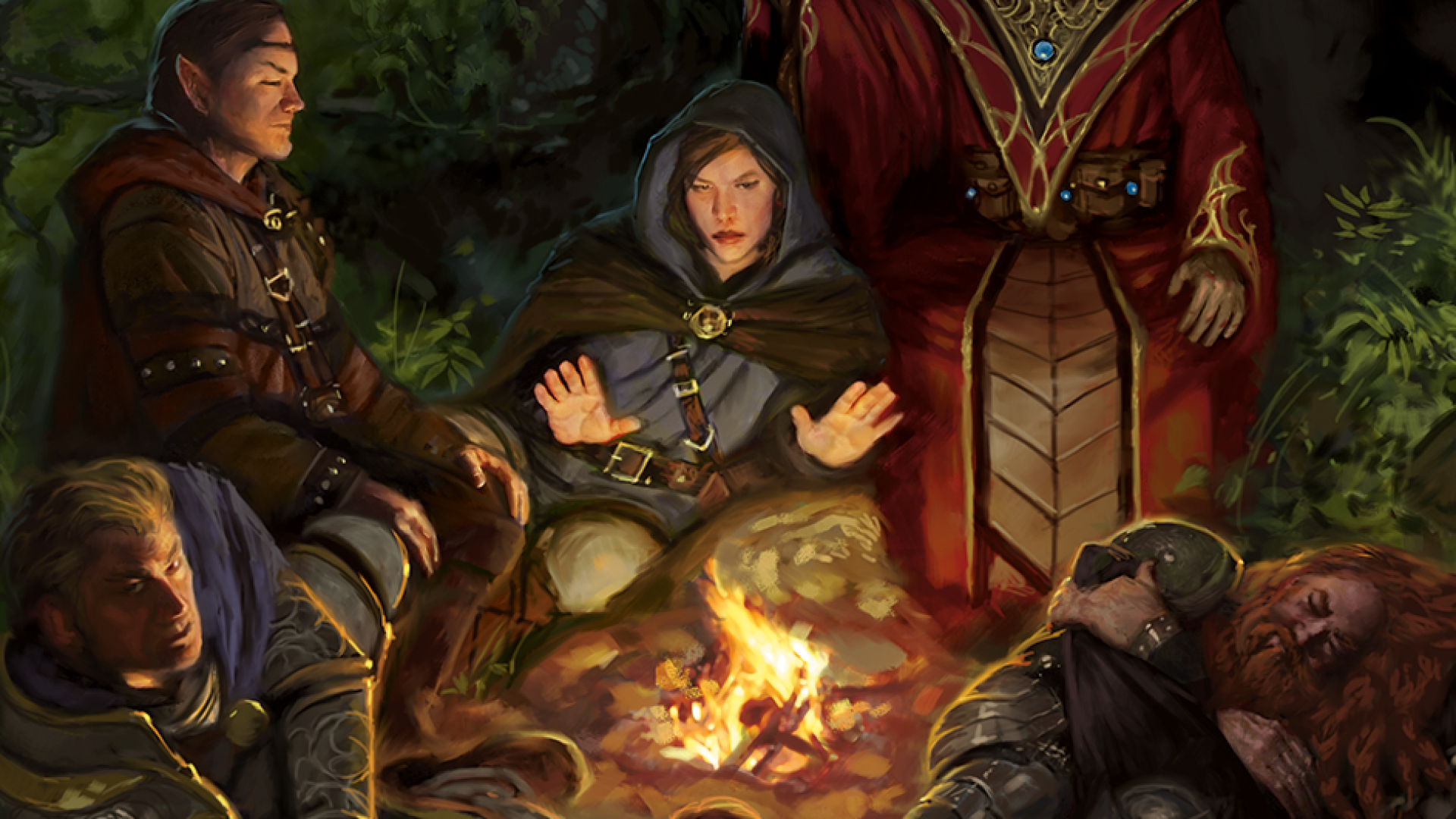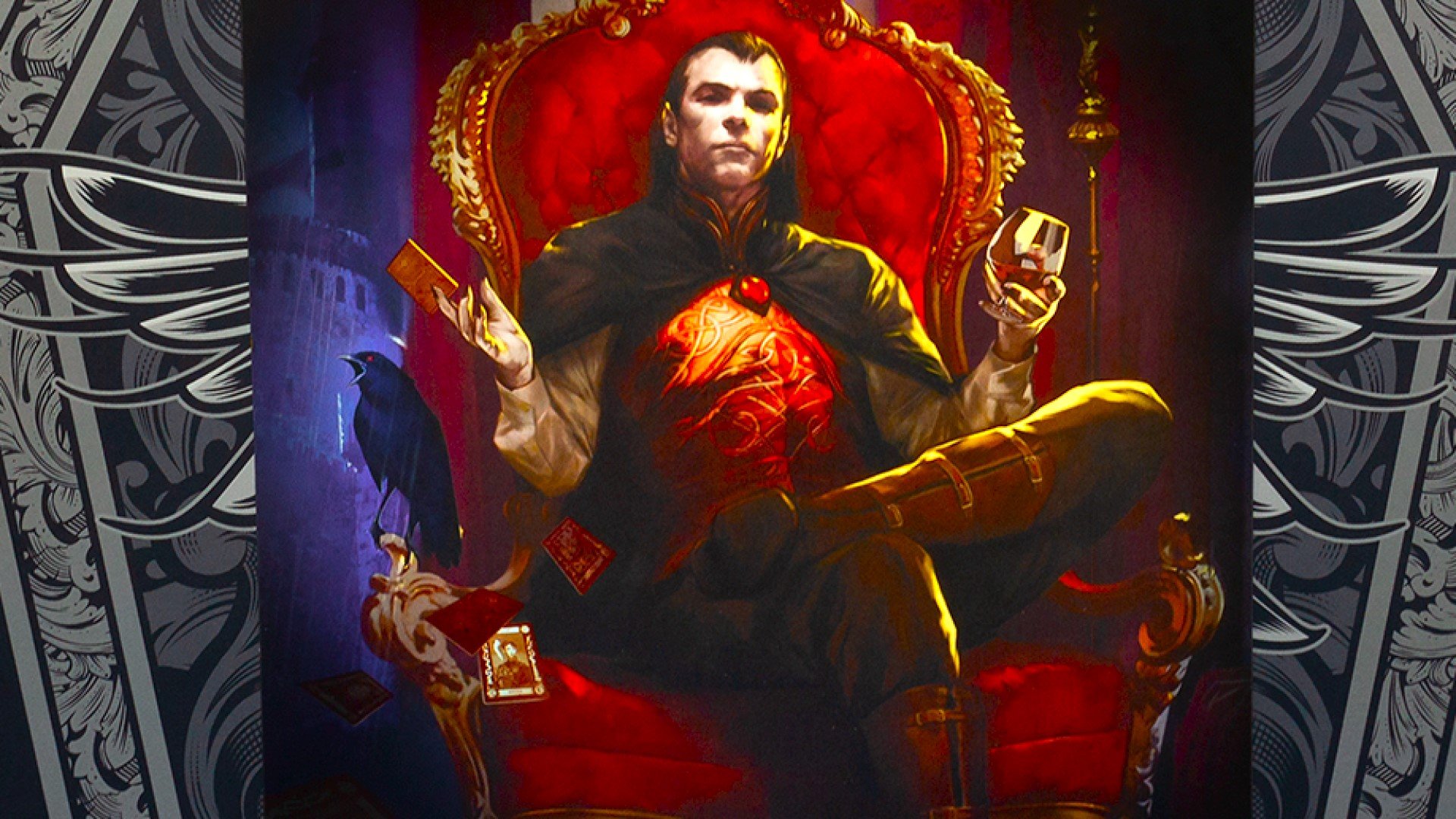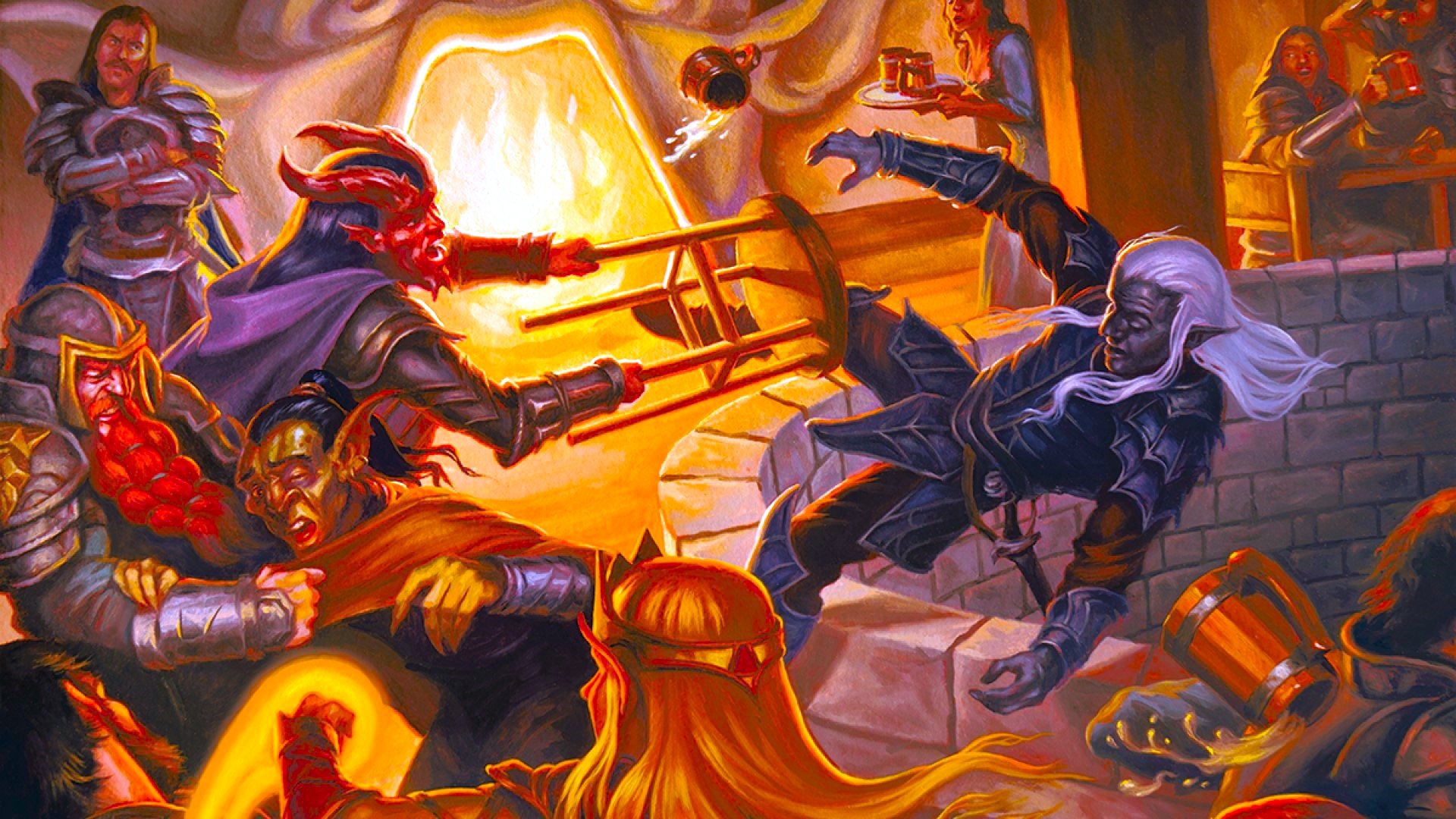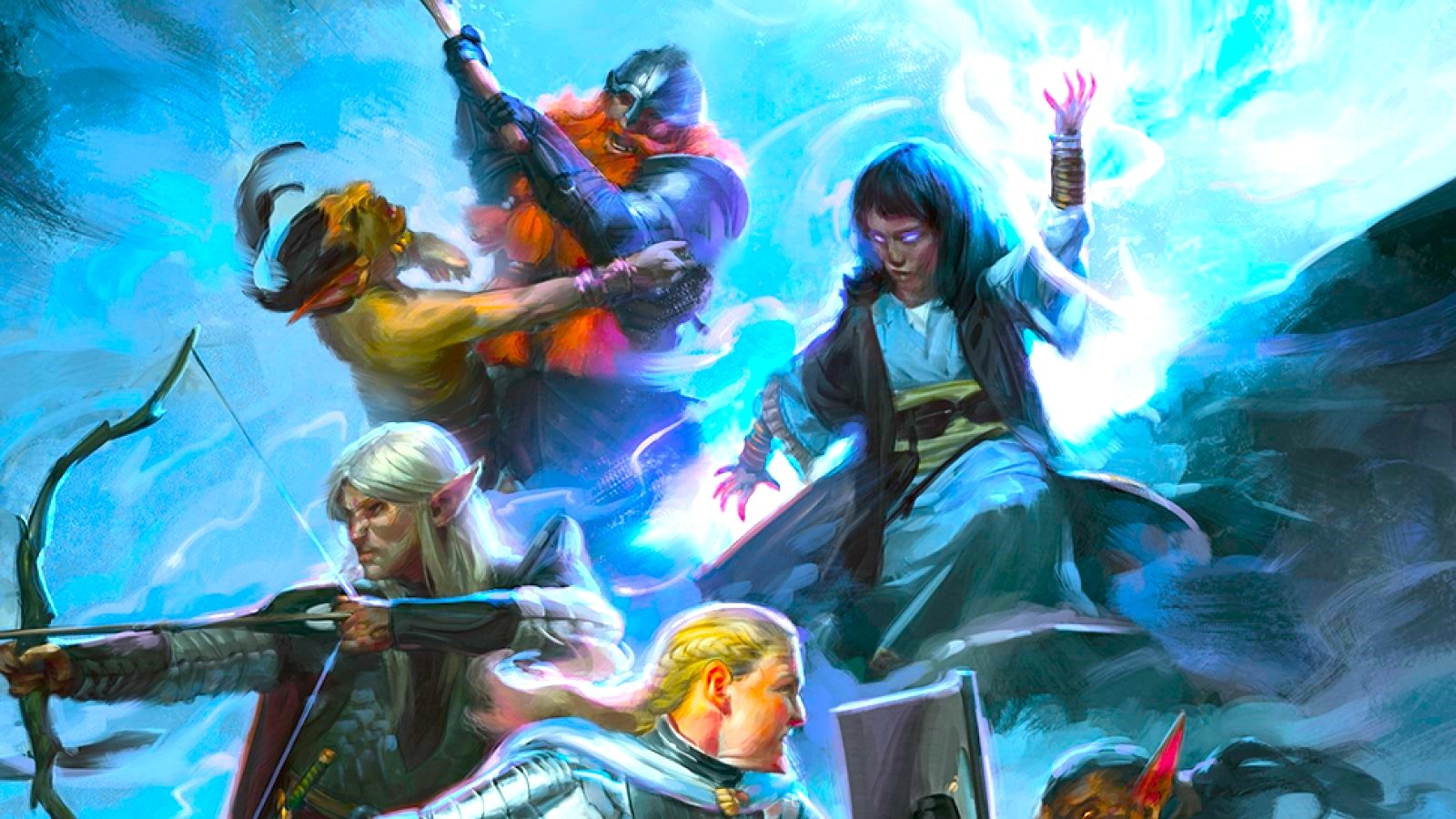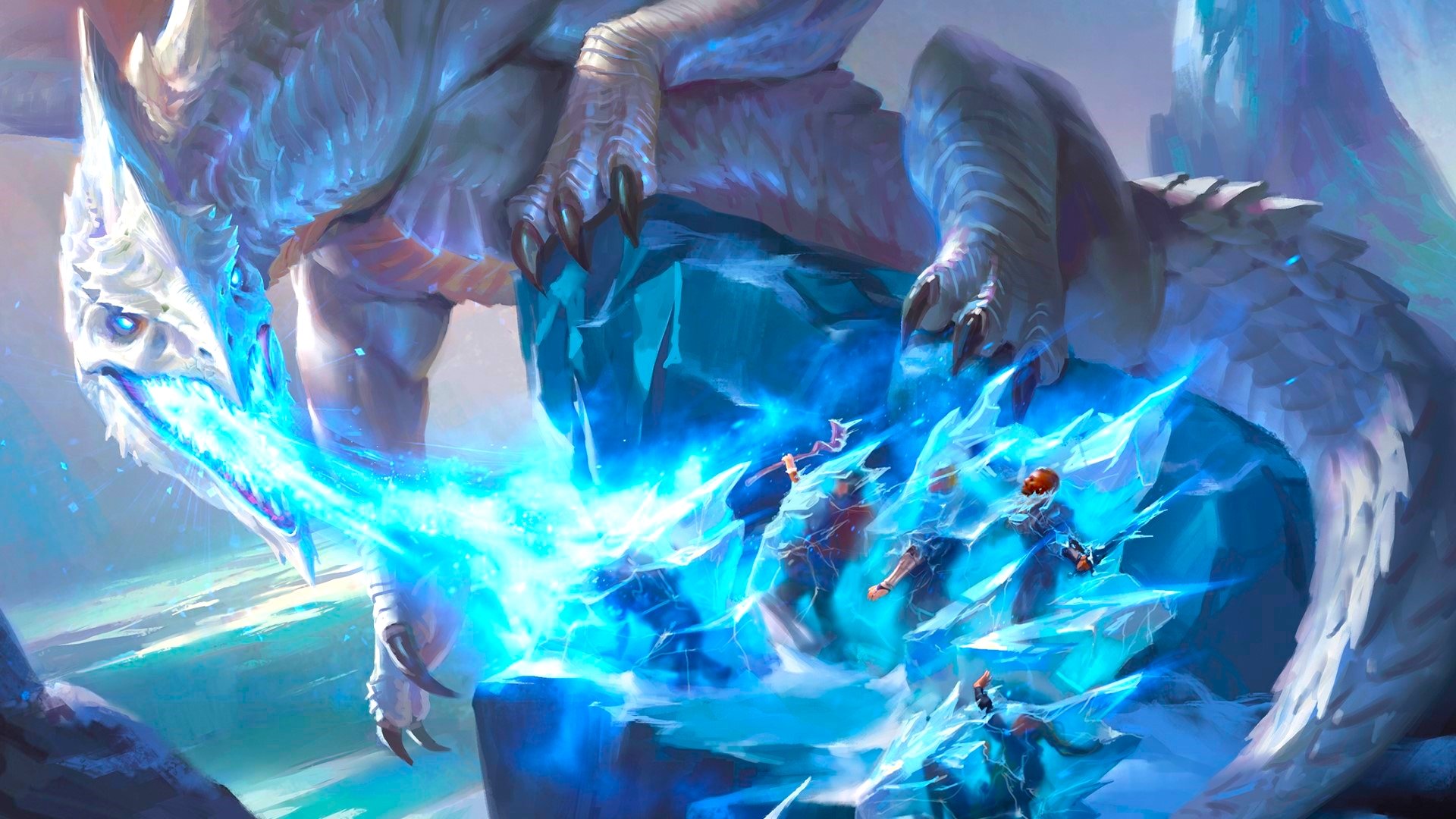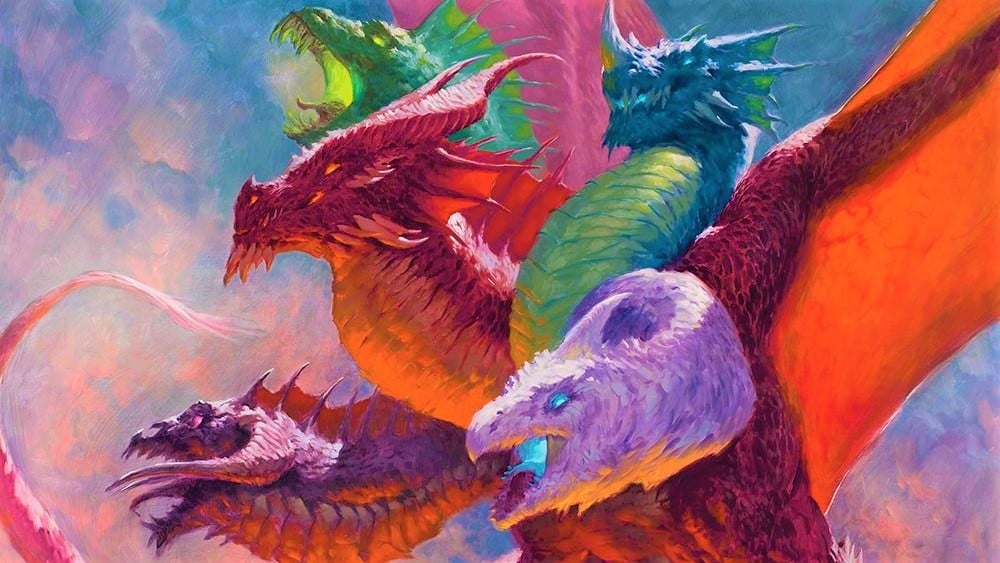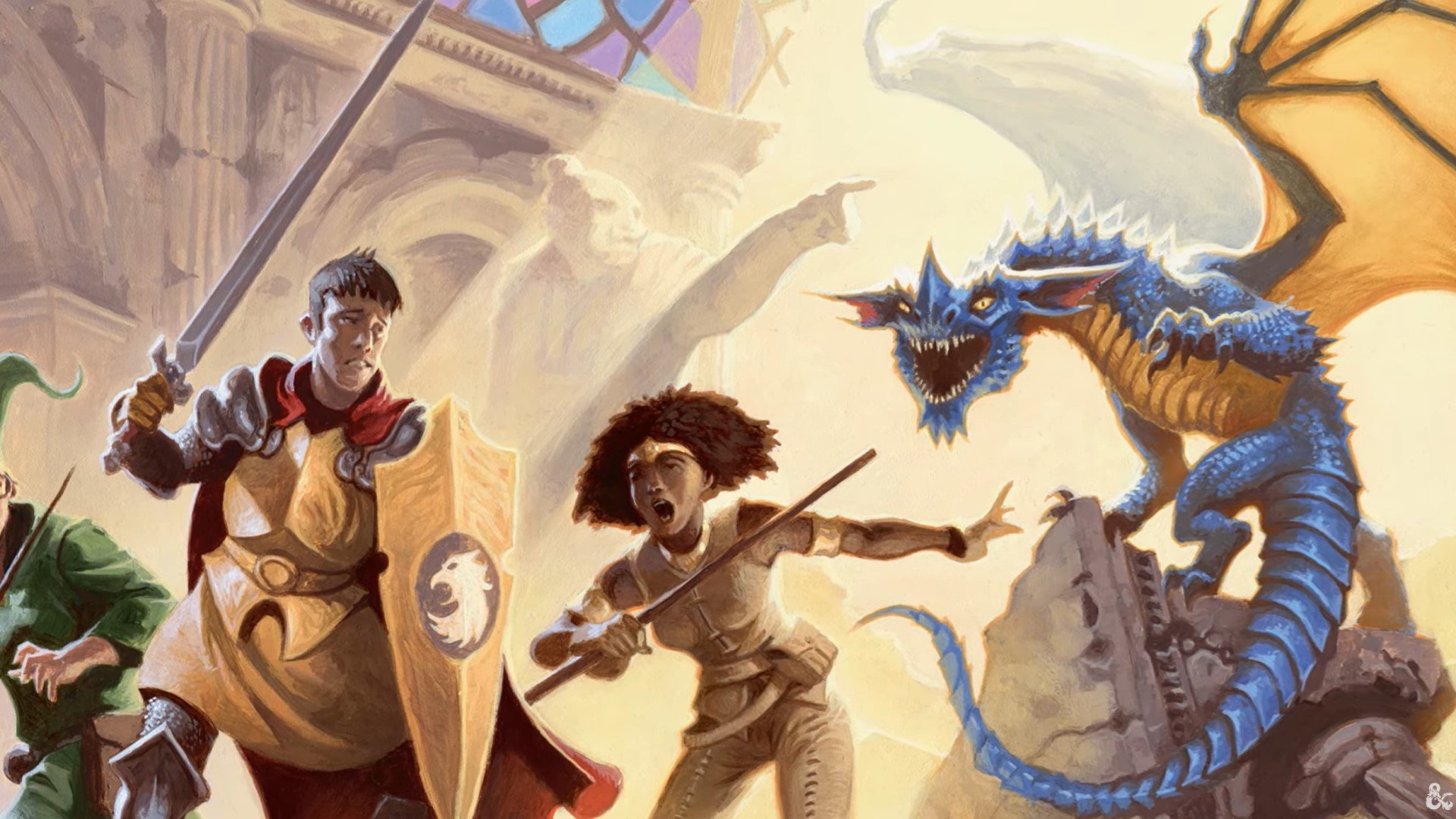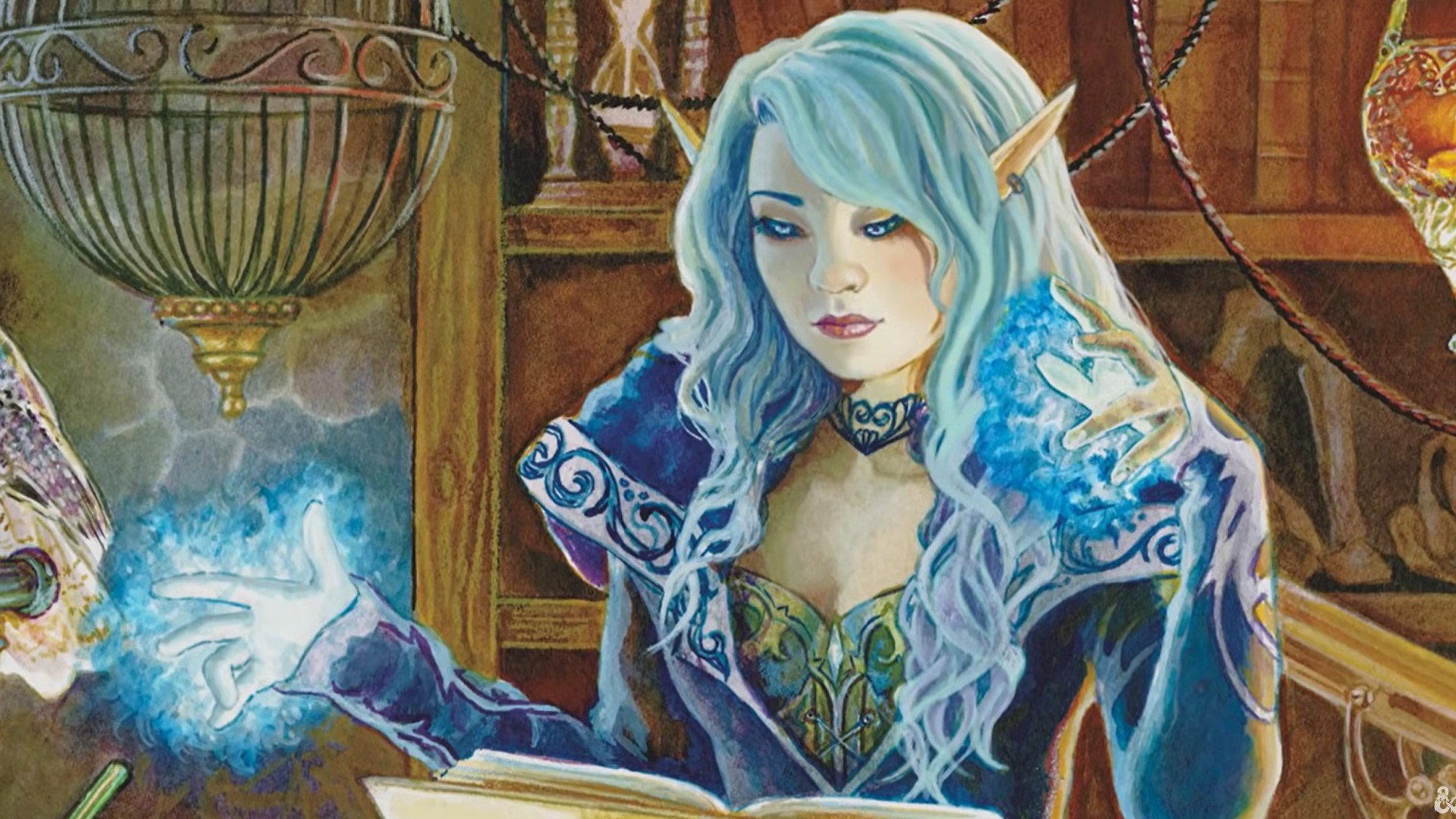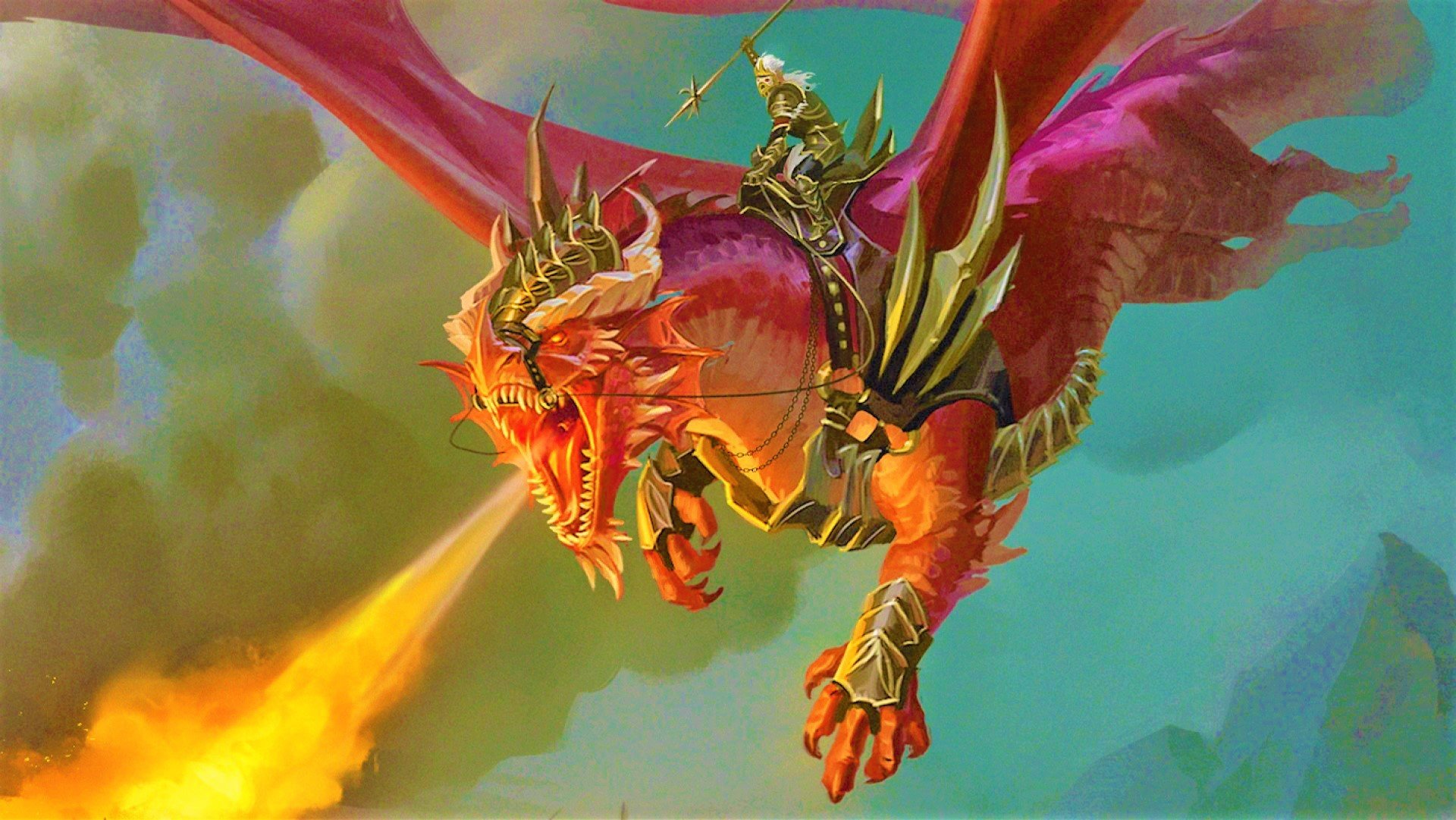As the official DnD Dungeon Master’s Guide says: “a Dungeon Master gets to wear many hats”. It’s one thing to learn how to play Dungeons and Dragons, but it’s another thing entirely to run a game of D&D. You become the storyteller that keeps the DnD campaign exciting; you become the rules arbiter who upholds and explains D&D’s most complex mechanics; you become an actor who improvises entire scenes, characters, and plot hooks. This guide breaks down the essentials of how to be a DM in D&D.
We’ve combined lessons from various DnD books with things we’ve learned from other tabletop RPGs – as well as first-hand experience playing and running games. We can also help you out with more player-related queries, so be sure to check out our guides to DnD classes, DnD races, and DnD backgrounds while you’re here.
You don’t have to know every rule
Granted, you need to understand how to play Dungeons and Dragons to DM at all. It’ll help to know what DnD stats are, and knowing which DnD dice to roll when is definitely useful. But you don’t have to know every page of the Player’s Handbook and the Dungeon Master’s Guide off by heart.
Our advice is to begin by taking a wander through the Dungeon Master’s Guide or a starter set like Dragons of Stormwreck Isle, reading as carefully or care-free-ly as you like. You can note down or bookmark any sections that seem particularly important or you know you’re likely to forget. You can also, if you like, pick up a Dungeon Master’s screen – these often have a D&D ‘cheat sheet’ printed on the inside so you can find the most important rules at a glance during a campaign.
The main thing to remember is you’re allowed to say ‘I don’t know’ during a D&D game. Good players won’t mind waiting while you scroll through a digital document or flick through a tome to find the rule you need.
The DnD Beholder Xanathar may claim to have a guide to everything, but we bet even he can’t remember all the information he’s gathered by heart.
Start with a pre-written adventure
Whether it’s a DnD one-shot or a long-running DnD campaign, creating a world, characters, and a plot for Dungeons and Dragons can be a lot of work – and a lot of new skills to learn for someone who might not have a background in creative writing. Chapter One of the DM’s Guide has a lot of good tips for world-building and crafting narratives, but beginner DMs may want to choose an even easier first option.
Dungeons and Dragons has a huge range of pre-written adventures for you to choose from. The D&D Essentials Kit comes with an adventure specifically designed for beginner players, and anthology sourcebooks like Candlekeep Mysteries and Journeys Through the Radiant Citadel offer a series of adventures that can make great one-offs or be strung together into full-fledged campaigns.
There are also adventure modules like Curse of Strahd which offer a long-running narrative and a pre-generated Big Bad Evil Guy to do battle with. You’ll get to learn a little about D&D’s fabulous lore, and save yourself a bit of time. We’ve even got a guide to the best DnD campaigns you can check out.
Of course, you don’t always have to use pre-written material. Some people love creating their own Tolkien-level fictional worlds. If you’re a born fantasy writer who wants to use your skills, jump right in and enjoy yourself; but if the thought of drawing your own DnD maps makes you sweat, there’s no shame in a pre-written game.
Plan only as much as you need
Speaking of creating rich DnD settings and over-arching plots – don’t get too carried away. One of the most important skills a good DM needs to learn is the ability to improvise. Sometimes players won’t react as you expected – they’ll completely gloss over the adventure you spent hours drafting and instead choose to investigate the insignificant goblin barkeep you added as set dressing.
To save yourself wasted work and heartbreak, plan only as much as you need for a single session. It can help to know roughly what overarching goal your players are working towards, but small details can be sorted out as you go. It’ll also help you tweak your campaign to suit the goals and interests of your players. They’ll thank you for doing this rather than keeping them on a strict railroad.
Discuss expectations with your players
It can help to know what kind of D&D game your players want before any of you even sit down at the table. A successful D&D campaign is one where DM and players understand each others’ expectations – if the DM wants to run an intense game of political intrigue and the players want a comedy romp, someone will probably leave the first campaign session feeling frustrated.
Discussing expectations can also help promote safety at your D&D table. Some DnD games cover dark or upsetting themes, and not every player is comfortable with this experience. In recent years, running a ‘session zero’ has become popular – this is where you meet with your players before the game begins to discuss goals, boundaries, and ideas.
It doesn’t all have to be serious talk, of course. A session zero might give you a great idea for incorporating character backstories into your campaign, or you might be able to help a new player choose which of classes and races will suit them best.
Work with your players, not against them
One mistake many new Dungeon Masters make is assuming D&D is a competitive game. The goal is not to kill your players off or force them to endure your masterpiece of fantasy writing like hostages held in a cinema. D&D is a collaborative storytelling and roleplaying exercise – meaning you should work with your players to create a campaign everyone gets to enjoy.
Many TTRPG rulebooks suggest saying ‘yes’ to as many player ideas as possible. This excludes ideas that will break the game or ruin other players’ experiences, but it means you should create a space where players can run with ideas that really excite them.
For some DMs, that might be tweaking a few rules or roles so a player can pull off a really brave or creative feat. For others, that might be adjusting the story to make NPCs the players love more important to the plot. Again, don’t be afraid to improvise.
Choose a style that suits you
We’ve talked a lot about making your DnD game fun for your players, but it’s also vital the game is fun for you. This means you should focus on using the skills that bring you the most enjoyment. Luckily, DMs don’t have to be good at everything.
If you hate doing silly voices for characters, don’t bother. If you hate all the maths involved in calculating a DnD level up, you can choose a simpler way of making characters stronger.
You can use maps and D&D miniatures to show your players what’s going on, or you can craft rich ‘theatre of the mind’ descriptions that show off your writing and performing skills. You might prefer playing on Roll20 over traditional paper and pens. The Dungeon Master’s Guide has some great explanations of the different roles and skills you’ll need to employ – cherry-pick the ones that work for you. Good DMing is an art, not a science.
Prepare small details ahead of time
While you don’t want to overprepare your big story moments or have an entire campaign mapped out from session one, arranging some ‘cheat’ sheets for smaller details will save you time and brain power. For example, it can be useful to have a list of NPC names ready to go – many a flustered DM has found their party suddenly invested in random goblin #4 and had to hastily create a compelling name, voice, and backstory on the fly. You can do the same with town names, random encounters for long journeys, loot, and more.
Similarly, it can be helpful to prepare snippets of location and dialogue for a session. Everyone’s thoughts are a bit more creative (and polished) when planned rather than improvised. These details are going to help your players picture a character, location, or scene, so they’re well worth a first draft.
Details are key to creating a believable world, and it doesn’t take much work to come up with these ahead of time. Many pre-written adventures will provide these, but you’ll need to do this work yourself if you’re creating the story and world from scratch. You may also want to add your own flair to the existing material.
Take notes (and use them)
You’re in charge of shaping and telling a story in your D&D game. This means it’s pretty important that you can remember everything about that story. This is helpful for a variety of reasons.
Firstly, you may simply need to remind someone what happened last session. Players will always appreciate a recap, and it might even be you who needs the help.
Secondly, notes help you plan story points. If you know everything about your players’ character backstories, you can weave this into the story somewhere for maximum engagement. A player may have also pulled off a particularly cool stunt during a session, or maybe they did something grim that’ll have lasting, horrible consequences. Your notes will help you develop these branches.
As well as story points, you can also prep encounters based on your notes. In particular, it’s helpful to know what’s on players’ character sheets as they level up. If a Wizard 5e character has plenty of 5e spells focused on fire damage, you know that an encounter with DnD monsters who are weak to fire will be a walk in the park. You also know beasts with fire immunity will cause a big problem.
Try a simpler RPG system
Perhaps it’s a little cheeky to suggest that not playing D&D makes you a better DM, but hear us out. Dungeons and Dragons isn’t a rules-light game; the three core books considered essential to play are hundreds of pages of reading each. Sure, you can skim these books and only pick up the bits you find useful, but complete newbies will likely want to absorb all the knowledge they can.
If you’ve never played a tabletop RPG before, D&D might be your introduction to the hobby. This makes it our job to remind you that it’s not the only tabletop RPG out there (as our tabletop RPGs guide proves) – and others will a bit faster and friendlier for beginners.
If you’re intimidated by learning lots of rules, we recommend trying games deliberately designed to be light on rules first. OSR games (Old School Renaissance) are often more compact experiences. Mörk Borg and Cy_Borg are solid choices for fans of dark dungeon crawlers, and Ten Candles provides reams of atmosphere in less than a hundred pages. Lasers and Feelings is a light sci-fi romp with rules that fit on a single page.
If you want to go even simpler, you can play RPGs that don’t even have dice to roll. Dread uses a Jenga Tower in the place of polyhedral dice, and Alice is Missing doesn’t even need a game master – the whole thing relies on cards and roleplaying via instant messaging.
Obviously, we think you should come back and play some D&D. But practising on a smaller stage before doing so doesn’t hurt.
Source: Wargamer



